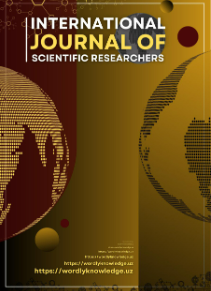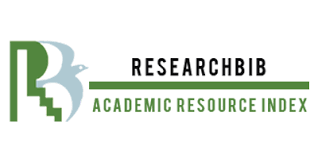THE IMPORTANCE OF INNOVATIVE IRRIGATION TECHNOLOGIES IN THE ECONOMY OF WATER RESOURCES
Keywords:
Agriculture, climate change, crop yields, economic benefits, environmental sustainability, global food security, inefficient water use, innovative irrigation technologies, resource conservation, sustainable irrigation practices technological advancements, water resource management, water scarcity, water use efficiency.Abstract
Water scarcity and inefficient water use in agriculture are critical issues that threaten global food security and environmental sustainability. As the world's population continues to grow and climate change exacerbates water shortages, the need for efficient and sustainable irrigation practices becomes increasingly urgent. Innovative irrigation technologies offer significant potential to optimize water use efficiency, conserve valuable resources, and improve crop yields. This paper provides a comprehensive review of the advancements in irrigation technologies, their profound impact on water resource management, and the substantial economic benefits they bring to the agricultural sector. By exploring the latest innovations and their applications, we aim to highlight the transformative role these technologies play in addressing one of the most pressing challenges of our time.
References
Gleick, P. H. (2018). The World's Water Volume 8: The Biennial Report on Freshwater Resources. Island Press.
Howell, T. A. (2003). Irrigation Efficiency. Encyclopedia of Water Science.
Shock, C. C., & Welch, T. (2013). Drip Irrigation: An Introduction. Oregon State University Extension Service.
Fereres, E., & Soriano, M. A. (2007). Deficit Irrigation for Reducing Agricultural Water Use. Journal of Experimental Botany, 58(2), 147-159.
Evans, R. G., & Sadler, E. J. (2008). Methods and Technologies to Improve Efficiency of Water Use. Water Resources Research, 44(7)
FAO. (2020). The State of Food and Agriculture 2020: Overcoming water challenges in agriculture. Food and Agriculture Organization of the United Nations.
E.Fereres , & Soriano, M. A. (2007). Deficit irrigation for reducing agricultural water use. Journal of Experimental Botany, 58(2), 147-159.
F.S.Nakayama, & Bucks, D. A. (1986). Trickle irrigation for crop production: Design, operation, and management. Elsevier Science Publishers.
G.Oron, DeMalach, Y., Gillerman, L., & David, I. (1999). Improved saline-water use under subsurface drip irrigation. Agricultural Water Management, 39(1), 19-33.
Evans, R. G., & Sadler, E. J. (2008). Methods and technologies to improve efficiency of water use. Water Resources Research, 44(7), W07421.
Lamm, F. R., Ayars, J. E., & Nakayama, F. S. (Eds.). (2001). Microirrigation for Crop Production: Design, Operation, and Management. Elsevier Science Publishers.
Jones, H. G. (2004). Irrigation scheduling: Advantages and pitfalls of plant-based methods. Journal of Experimental Botany, 55(407), 2427-2436.
Sadras, V. O., Dreccer, M. F., & J.J., S. (2012). Soil moisture at sowing and nitrogen management for wheat production in environments prone to terminal drought. Field Crops Research, 127, 215-224.
Kisekka, I., O’Shaughnessy, S., & Evett, S. R. (2016). Irrigation scheduling based on soil moisture sensors and evapotranspiration-based water balances. Agricultural Water Management, 178, 177-188.
Coates, R. W., Delwiche, M. J., & Brown, P. H. (2015). Design of a system for individual micro-sprinkler control to optimize irrigation scheduling in orchards. Applied Engineering in Agriculture, 31(2), 199-206.
OECD. (2016). Water use in agriculture: Highlights and recommendations. Organisation for Economic Co-operation and Development.
Garrido, A., Rey, D., Calatrava, J., & Montilla-López, N. M. (2010). Water pricing and institutional options for improving agricultural water management in the Guadalquivir River Basin, Spain. Water Policy, 12(S1), 146-164.
Gleick, P. H. (2003). Water use. Annual Review of Environment and Resources, 28(1), 275-314.
Steduto, P., Hsiao, T. C., Fereres, E., & Raes, D. (2012). Crop yield response to water. FAO Irrigation and Drainage Paper 66. Food and Agriculture Organization of the United Nations.
Postel, S. L., Polak, P., Gonzales, F., & Keller, J. (2001). Drip irrigation for small farmers: A new initiative to alleviate hunger and poverty. Water International, 26(1), 3-13.
Molden, D., Oweis, T., Steduto, P., Bindraban, P., Hanjra, M. A., & Kijne, J. (2010). Improving agricultural water productivity: Between optimism and caution. Agricultural Water Management, 97(4), 528-535.
Jury, W. A., & Vaux, H. J. (2007). The emerging global water crisis: Managing scarcity and conflict between water users. Advances in Agronomy, 95, 1-76.
Burney, J. A., & Naylor, R. L. (2012). Smallholder irrigation as a poverty alleviation tool in sub-Saharan Africa. World Development, 40(1), 110-123.







